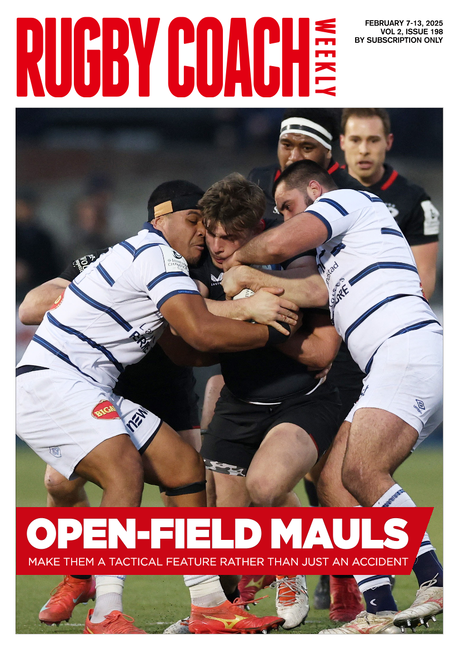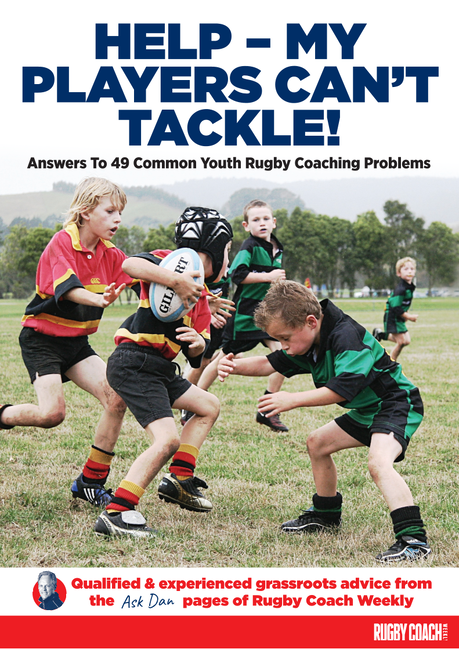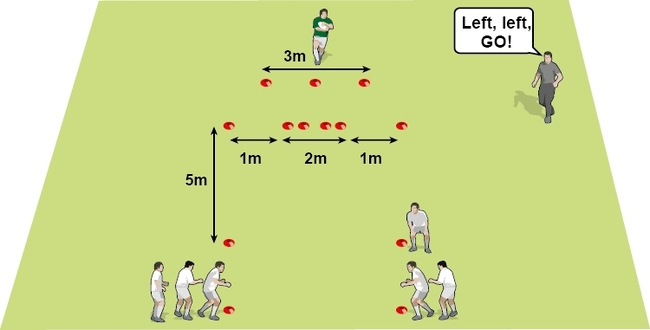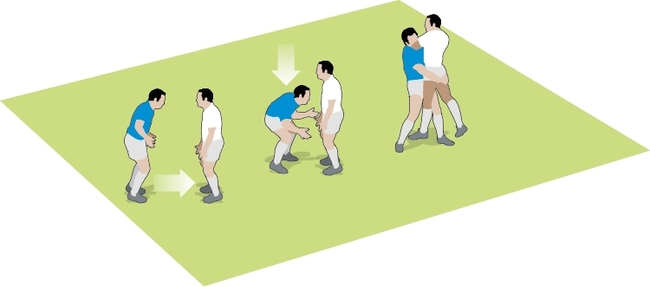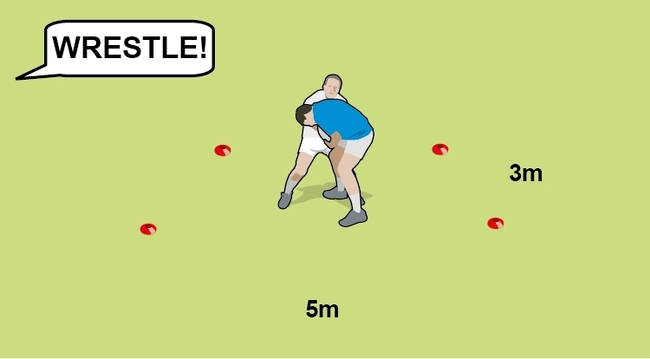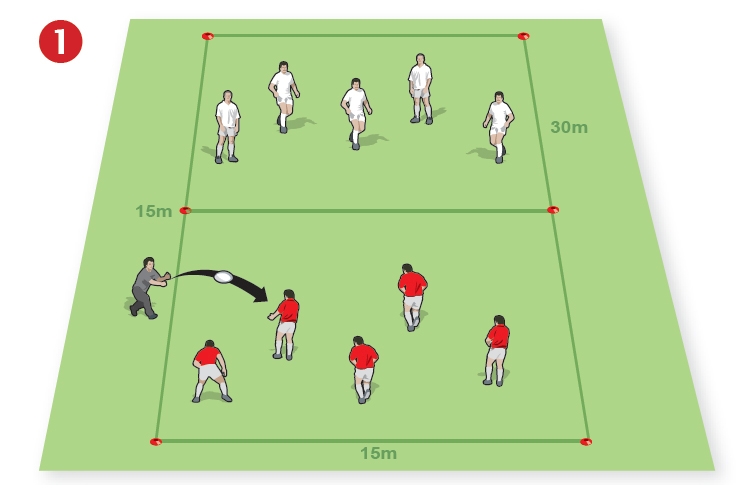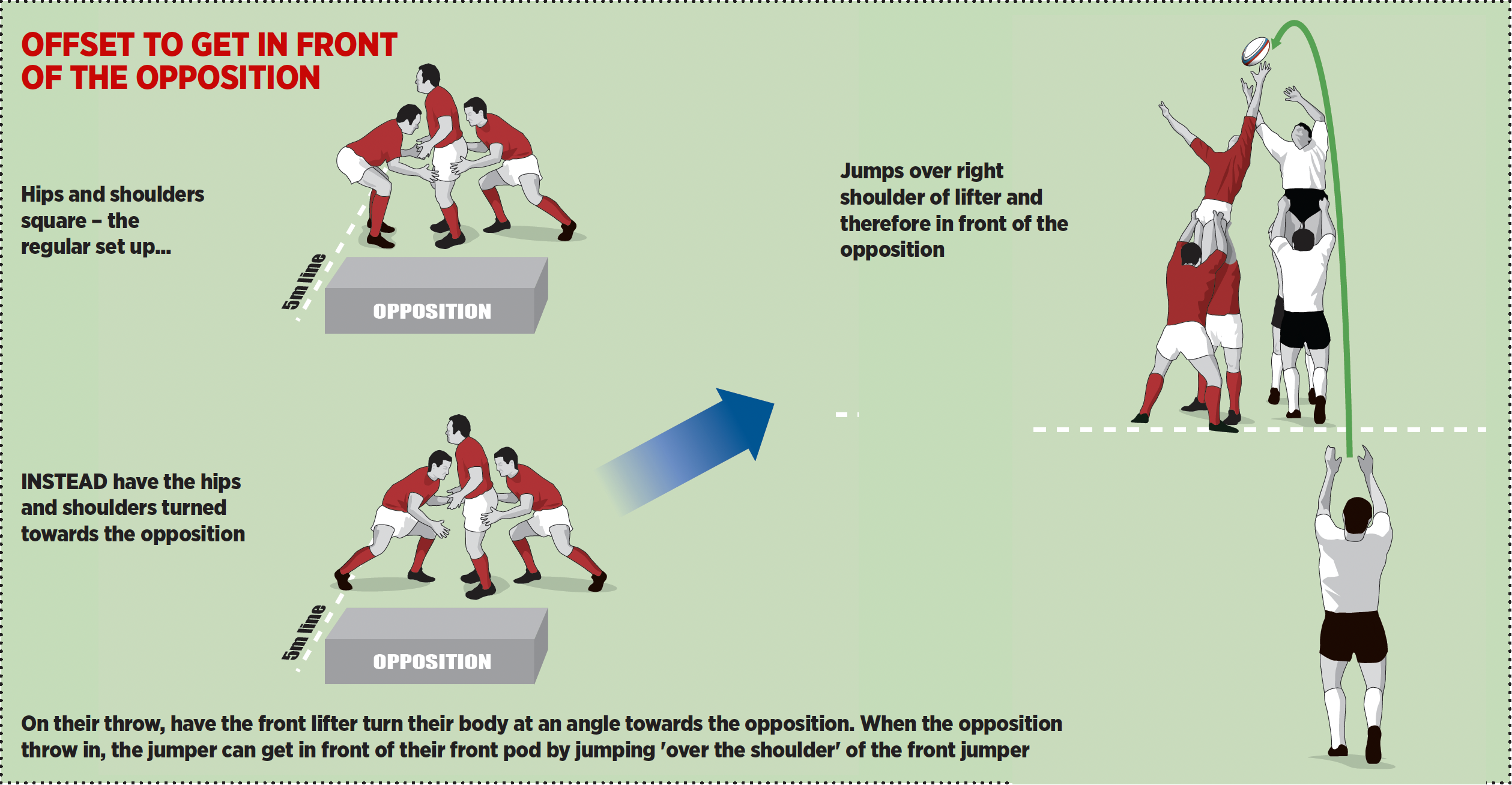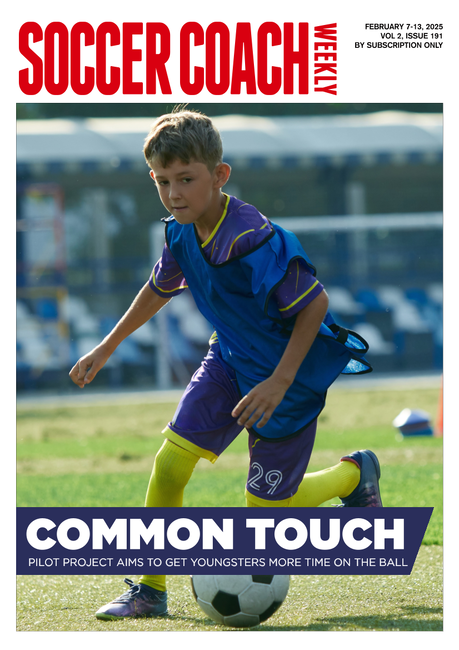Refreshing tackle games
Tacklingby Paul Tyler
We’ve all felt like this before. You leave tackling out of a session for just one week and it’s as if players have never done it before. Here are four simple ways to get them back on track.
Tackling, like passing, is a core skill that should be worked on at every training session. It doesn’t need to be 100% full contact either. Footwork, contact skills positioning and technique can all be worked on using touch or scrag games.
Most missed, or poor, tackles are because the tackler’s feet are too far away from the ball carrier to make an effective shoulder tackle. When you are playing conditioned games of touch always insist on a two-handed touch on the waist. This shows you that the defender has got his feet into a position where he would have been able to make the tackle.
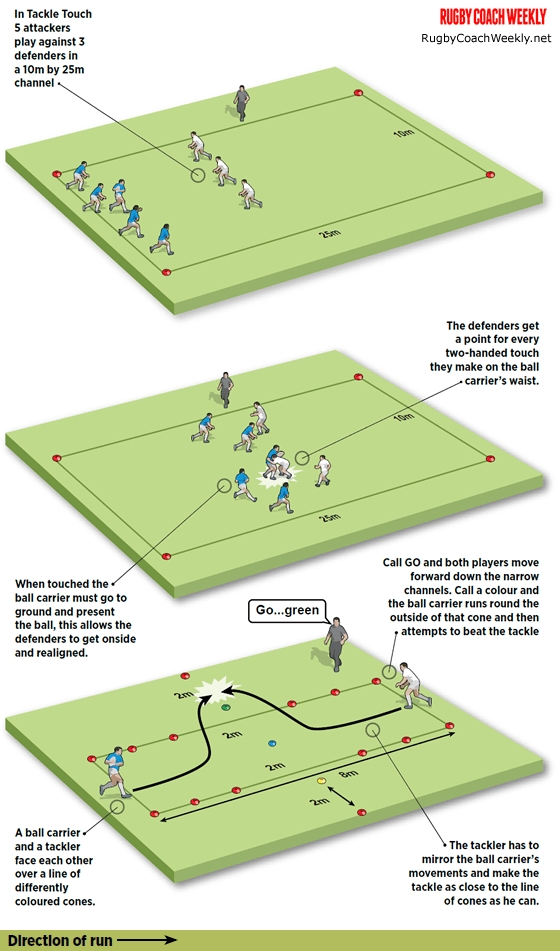
Play 5v3 in a 25m x 10m box. Defenders get a point for every two-handed touch on the ball carrier’s waist (see picture 1). When touched, the ball carrier must go to ground and present the ball - this allows the defenders to get onside and realigned (see picture 2).
Games of scrag are an excellent extension from touch games and allow players to develop tackle technique without making full tackles. In scrag, tacklers stop the ball carrier by holding him rather than making a full tackle.
As referee you call when the tackle is made which gives you control over the games. Any game can be played as scrag and it is excellent for developing footwork, positioning and technique.
Every player I have coached loves full contact walking rugby. Use full rugby laws. The only difference is that players can only walk. This allows them to work on their tackle technique in a low pressure, slow motion situation.
This 1v1 game can be played as touch, scrag or full contact and develops all the skills needed to make effective tackles. A ball carrier and a tackler face each other in an 8m x 4m channel. Midway across the channel is a line of different coloured cones at 2m intervals. You call “GO” and a colour and the
ball carrier runs round the outside of that cone and attempts to beat the tackler.
The tackler has to mirror the ball carrier’s movements and make the tackle as close to the line of cones as he can (see picture 3).
Tackling, like passing, is a core skill that should be worked on at every training session. It doesn’t need to be 100% full contact either. Footwork, contact skills positioning and technique can all be worked on using touch or scrag games.
Most missed, or poor, tackles are because the tackler’s feet are too far away from the ball carrier to make an effective shoulder tackle. When you are playing conditioned games of touch always insist on a two-handed touch on the waist. This shows you that the defender has got his feet into a position where he would have been able to make the tackle.

Use these four ways to refresh tackling skills:
1 Tackle touch
Play 5v3 in a 25m x 10m box. Defenders get a point for every two-handed touch on the ball carrier’s waist (see picture 1). When touched, the ball carrier must go to ground and present the ball - this allows the defenders to get onside and realigned (see picture 2).
2 Scrag
Games of scrag are an excellent extension from touch games and allow players to develop tackle technique without making full tackles. In scrag, tacklers stop the ball carrier by holding him rather than making a full tackle.
As referee you call when the tackle is made which gives you control over the games. Any game can be played as scrag and it is excellent for developing footwork, positioning and technique.
3 Walking rugby
Every player I have coached loves full contact walking rugby. Use full rugby laws. The only difference is that players can only walk. This allows them to work on their tackle technique in a low pressure, slow motion situation.
4 Repetition
This 1v1 game can be played as touch, scrag or full contact and develops all the skills needed to make effective tackles. A ball carrier and a tackler face each other in an 8m x 4m channel. Midway across the channel is a line of different coloured cones at 2m intervals. You call “GO” and a colour and the
ball carrier runs round the outside of that cone and attempts to beat the tackler.
The tackler has to mirror the ball carrier’s movements and make the tackle as close to the line of cones as he can (see picture 3).
Premium Books
Newsletter Sign Up
Coaches Testimonials

Gerald Kearney, Downtown Las Vegas Soccer Club

Paul Butler, Florida, USA

Rick Shields, Springboro, USA

Tony Green, Pierrefonds Titans, Quebec, Canada
Subscribe Today
Be a more effective, more successful rugby coach
In a recent survey 89% of subscribers said Rugby Coach Weekly makes them more confident, 91% said Rugby Coach Weekly makes them a more effective coach and 93% said Rugby Coach Weekly makes them more inspired.
Get Weekly Inspiration
All the latest techniques and approaches
Rugby Coach Weekly offers proven and easy to use rugby drills, coaching sessions, practice plans, small-sided games, warm-ups, training tips and advice.
We've been at the cutting edge of rugby coaching since we launched in 2005, creating resources for the grassroots youth coach, following best practice from around the world and insights from the professional game.

